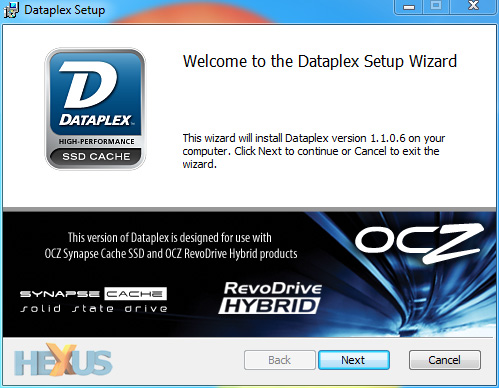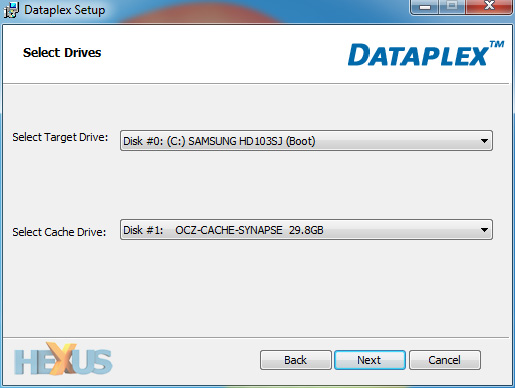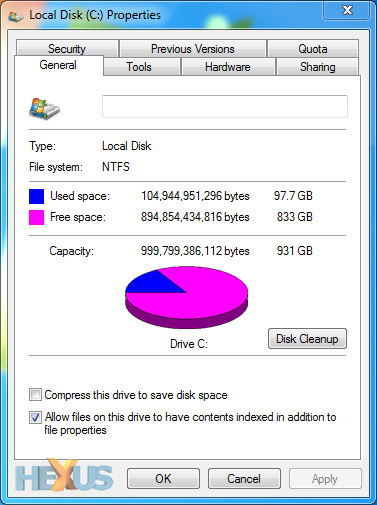Setup and software
Like the RevoDrive Hybrid, the brains behind the Synapse's caching functionality is a third-party software utility dubbed Dataplex.
OCZ doesn't include the software in the retail box, so the user is required to visit the OCZ website and download the utility by entering the product key shown on the drive itself.
A slight inconvenience, but the setup process is otherwise simple and straightforward. You begin by attaching the Synapse SSD to one of your system's available SATA 6Gbps ports (it is backward-compatible with SATA 3Gbps but will operate at lower speeds) and then boot into Windows. The drive is automatically recognised, and once initialised, you've one final step; install the Dataplex software.

The setup wizard is very straightforward and provides a few simple steps to follow. Once complete, the software will dynamically cache frequently-used "hot" data to the Syanpse SSD for ultra-fast access the next time around.
The software hasn't changed since we reviewed the RevoDrive Hybrid, and it works in exactly the same way - it caches data at both the block and file level, so entire files aren't necessarily cached. To give you an example, OCZ states that "if you have a large Outlook .PST file, only the blocks that are frequently used or most recently accessed are cached, such as the most recent email messages".
In an effort to achieve the best possible performance, the Dataplex software is also configured to utilise a write-back configuration, meaning that data is first written to the high-speed cache, before "cold" data is moved out of the cache and onto the slower hard disk.

The above screenshot depicts the key step during setup. This is where the user selects the target drive and the cache, and it's where the Synapse is very different to the RevoDrive Hybrid. Unlike the Hybrid, which featured both hard-disk and solid-state components in one package, the Synapse provides only the SSD component - allowing the user to select his/her own target boot drive.
In the above example, our test platform is configured with a 1TB Samsung HD103SJ hard disk as its primary boot device and the OCZ Syanpse is chosen to be its cache. The Synapse can only act as a cache for one primary volume, but what's useful to know is that it will function with a RAID volume - allowing you to cache a couple of hard disks configured in RAID.
Hit next, complete the setup wizard, and you're prompted to restart your PC. Once back in Windows, the cache is already working and the SSD is hidden from the system to prevent any other usage. It's stating the obvious, but remember that the Synapse doesn't provide any additional capacity. Using the above example, our combined Samsung hard-disk and Synapse SSD continues to provide the same 1TB capacity we started with:

The £120 outlay doesn't provide any additional storage, but it does vow to increase system performance.
We'll soon find out if it does, but before we move on to the benchmarks, let's get one big proviso out the way: the Dataplex software is compatible only with Windows 7, so the Synapse can't be used as a cache in Mac, Linux or Windows XP environments.
We've stated that the Synapse is more flexible than the RevoDrive Hybrid, and while that's true, it still isn't as flexible as we'd like and relying on software support always makes us nervous. There's no guarantee, for example, that it'll continue to function correctly with future operating systems such as Windows 8.









